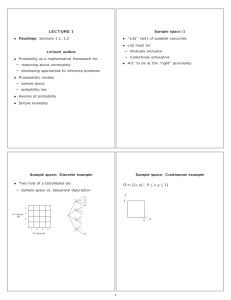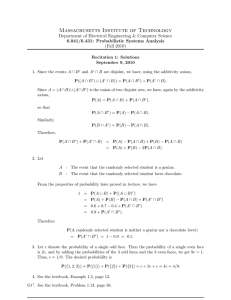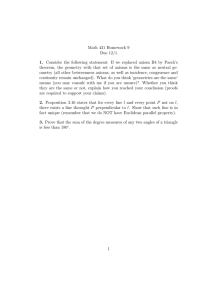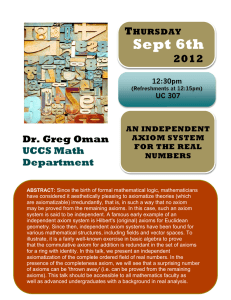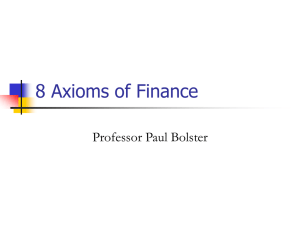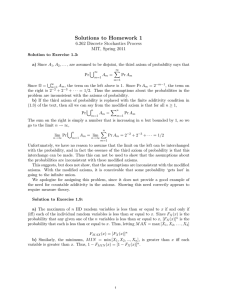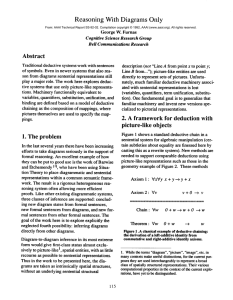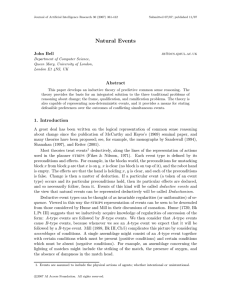6.041SC Probabilistic Systems Analysis and Applied Probability, Fall 2013
advertisement
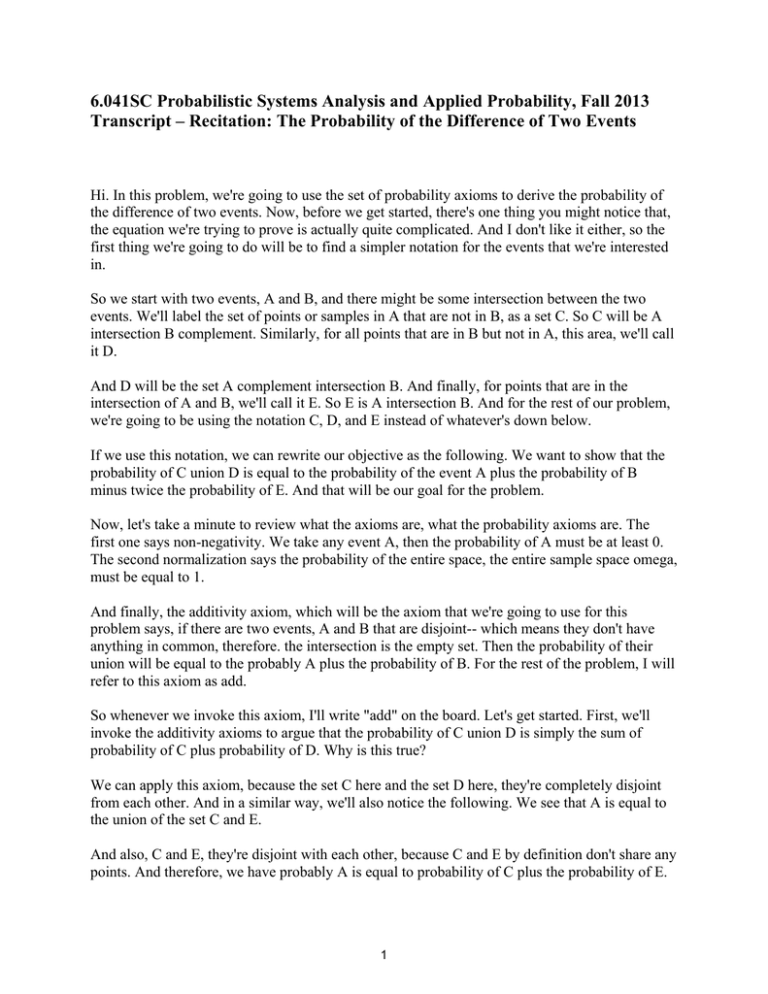
6.041SC Probabilistic Systems Analysis and Applied Probability, Fall 2013 Transcript – Recitation: The Probability of the Difference of Two Events Hi. In this problem, we're going to use the set of probability axioms to derive the probability of the difference of two events. Now, before we get started, there's one thing you might notice that, the equation we're trying to prove is actually quite complicated. And I don't like it either, so the first thing we're going to do will be to find a simpler notation for the events that we're interested in. So we start with two events, A and B, and there might be some intersection between the two events. We'll label the set of points or samples in A that are not in B, as a set C. So C will be A intersection B complement. Similarly, for all points that are in B but not in A, this area, we'll call it D. And D will be the set A complement intersection B. And finally, for points that are in the intersection of A and B, we'll call it E. So E is A intersection B. And for the rest of our problem, we're going to be using the notation C, D, and E instead of whatever's down below. If we use this notation, we can rewrite our objective as the following. We want to show that the probability of C union D is equal to the probability of the event A plus the probability of B minus twice the probability of E. And that will be our goal for the problem. Now, let's take a minute to review what the axioms are, what the probability axioms are. The first one says non-negativity. We take any event A, then the probability of A must be at least 0. The second normalization says the probability of the entire space, the entire sample space omega, must be equal to 1. And finally, the additivity axiom, which will be the axiom that we're going to use for this problem says, if there are two events, A and B that are disjoint-- which means they don't have anything in common, therefore. the intersection is the empty set. Then the probability of their union will be equal to the probably A plus the probability of B. For the rest of the problem, I will refer to this axiom as add. So whenever we invoke this axiom, I'll write "add" on the board. Let's get started. First, we'll invoke the additivity axioms to argue that the probability of C union D is simply the sum of probability of C plus probability of D. Why is this true? We can apply this axiom, because the set C here and the set D here, they're completely disjoint from each other. And in a similar way, we'll also notice the following. We see that A is equal to the union of the set C and E. And also, C and E, they're disjoint with each other, because C and E by definition don't share any points. And therefore, we have probably A is equal to probability of C plus the probability of E. 1 Now, in a similar way, the probability of event B can also be written as a probability of D plus the probability of E, because event B is the union of D and E. And D and E are disjoint from each other. So we again invoke the additivity axiom. Now, this should be enough to prove our final claim. We have the probability of C union D. By the very first line, we see this is simply probability of C plus the probability of D. Now, I'm going to insert two terms here to make the connection with a second part of the equation more obvious. That is, I will write probability C plus probability E plus probability D plus probability of E. Now, I've just added two terms here-- probability E. So to make the equality valid or subtract it out two times, the probability of E. Hence this equality is valid. So if we look at this equation, we see that there are two parts here that we've already seen before right here. The very first parenthesis is equal to the probability of A. And the value of the second parenthesis is equal to the probability of B. We just derived these here. And finally, we have the minus 2 probability of E. This line plus this line gives us the final equation. And that will be the answer for the problem. 2 MIT OpenCourseWare http://ocw.mit.edu 6.041SC Probabilistic Systems Analysis and Applied Probability Fall 2013 For information about citing these materials or our Terms of Use, visit: http://ocw.mit.edu/terms.
